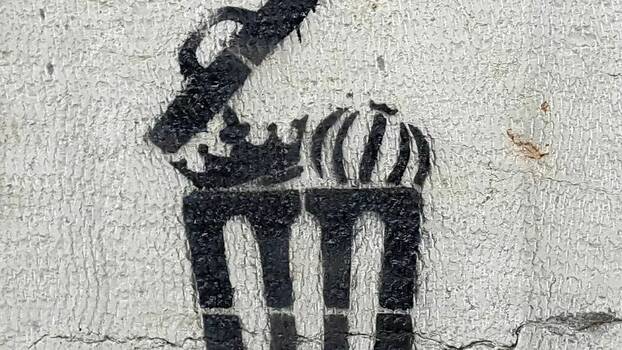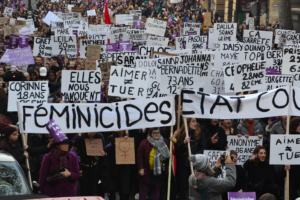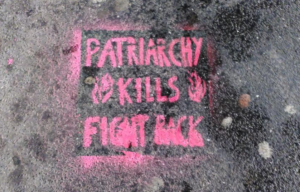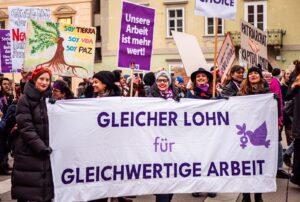How Iran’s (feminist) revolution is being hijacked
Shifting the focus in the name of “human rights” …
A revolution in an authoritarian regime such as the Islamic Republic of Iran, which has a well-connected and active diaspora, harbours a dangerous ambivalence. On the one hand, exiled Iranians offer a vital platform to the courageous revolutionaries in Iran, who, in the face of severe repression, are unable to join forces politically and speak freely, but still need publicity on the global stage. Although there is opposition in Iran, many protesters have been killed or imprisoned (the death toll is over 500 and around 20,000 have been arrested). On the other hand, diasporas of this kind tend to fill the political vacuum with their own agenda, claiming it to be the “will of the Iranian people”.
This inevitably leads to the one-dimensional representation of the revolution’s many interconnected aspects. The revolution, now into its fifth month, has adopted the slogan “Woman, Life, Freedom – at all levels, by all available means”. The movement was initiated by the courageous women of Iran, who, by challenging the patriarchy, have defied what is undoubtedly one of the central pillars underpinning the mullahs’ authority. But the Islamic Republic of Iran has other pillars and now the entire country is taking to the streets to express its outrage against all forms of injustice and problems associated with the mullah regime. Devastating neoliberal policies, widespread corruption and nepotism, spiralling inflation, the destitution of workers and the poor, discrimination against ethnic and religious minorities, climate disasters, hopelessness and a lack of opportunities among the young generation feature prominently on the long list of grievances. The artist behind protest song Baraye based his lyrics on real-life Tweets from Iranians on a whole host of issues and the piece conveys the revolution’s complexity more accurately than all of the articles written by so-called Iran experts, who are determined to reduce everything to a single issue.
For instance, when they (just) write that Iranian women took to the streets because they “are against being forced to wear the veil”, the revolution is reduced to a fight for political freedom. Widespread social political demands for bread, work and equality, which have been voiced by the lower classes since 2017, as well as strike actions and the disruption of urban infrastructure are being ignored, as are widespread anti-authoritarian cries of “Down with the oppressor, be it the shah or the supreme leader.” This is disastrous given the considerable disparities in media coverage within the Iranian diaspora. The largest foreign-based Iranian broadcasters are all liberal and supportive of the monarchy; there is practically no platform for left-wing ideas. There is a clear emphasis on what parts of the revolution are to be shown – and what should be ignored.
The reason for this reductive reporting lies in political ideology and a rejection of (perceived) contradictions. Shortly after Khomeini seized power in 1979, the women of Iran chanted the slogan: “Freedom is not Eastern or Western – it is universal.” But some liberal “human rights activists” in the West still seem to believe that freedom is, in fact, a Western concept. For instance, when they claim that, unlike Arab Spring protesters, Iran’s youth are “areligious and pro-West”, they create a homogenous ideal that reflects their own value judgements, i.e. “Western” means democratic, libertarian, secular and civilised. This implicitly suggests that “Eastern” means Islamic/religious, backward, violent and authoritarian. The Iranian youth is being weaponised and portrayed by those outside Iran as a group that aims to “join forces” with the West and thus strives for progress and freedom. They want to be “like us”, the pinnacle of civilisation and thus a new interpretation of Fukuyama’s “end of history”.
Exiled Iranian monarchists linked to the son of Mohammad Reza Pahlavi, the last shah of Iran, go one step further. Of course, they too all see themselves as human rights lawyers and claim to be leading authorities on the revolution, in the name of which they openly promote conservative ideas which the current revolution implicitly and explicitly opposes, e.g. that the great “Persian civilisation” and “patriotism” lie at the heart of the current movement. Both of these aspects contradict one of the core features of the revolutionary movement we are currently witnessing: solidarity between minorities. It was in the name of patriotism towards the Persian civilisation that the very groups that are now the beating heart of the revolution – in particular, the Kurds and the Baloch people – were suppressed, dehumanised and killed for centuries, including under Iran’s monarchy.
… and forced “solidarity” to stifle criticism.
The fanaticism involved in placing the people in Iran, or the ideas projected upon them, within the “block of progress” and/or aligning them with conservative values such as “patriotism” and Persianness not only makes broad generalisations about the movement in Iran but also its diaspora. Differences (or even contradictions) in ideologies, world views and social orders are imperiously denied: now everyone needs to show solidarity with the revolution in Iran. No opposition will be tolerated.
This was most recently demonstrated by a loose network comprising a handful of prominent exiled Iranians who support Pahlavi and portray themselves as the country’s opposition in exile, personally claiming to be organising some sort of transition on behalf of all Iranians. In its messaging, the group paints itself as surprisingly inclusive, open to criticism and moderate. But upon closer inspection, we see a group clearly dominated by Western-orientated human rights liberals and the monarchy, mainly US-based and with strong ties to American administrations both past and present, including former President Trump.
The arguments against this network are many. First, they do not represent the Iranian diaspora, which is far more diverse; most of all, they do not represent Iranians full stop. What is more, it is alarming and even divisive when the son of a shah rejected as an oppressor in a frequently chanted slogan claims to be acting in the name of the people. Second, it seems obvious that no one outside of Iran has the right to act on behalf of a revolution taking place inside the country. The revolution in Iran is led by the people in Iran. Although those in exile have an important part to play, it is only a supporting role. Third, this network is hindering the slow-paced but fundamental organisation of, and dialogue between, actors within Iran. This not only includes students, independent trade unions and the parents of those imprisoned and killed, but newly formed neighbourhood groups, who are releasing statements and organising political actions, often underground and in the face of considerable repression. These groups exist, and the fact that a handful of activists living abroad are portraying themselves as Iranian opposition is muddying the waters, especially for foreign media outlets that are now drawing on a pool of media savvy and highly persuasive (exiled) Iranians for endless rounds of interviews.
When such criticism is voiced, there is absolutely no interest in engaging with it; the response is simply emotional blackmail: division, sectarianism and betrayal are just some of the accusations circulating among Iranians. Given the revolution’s calls for peace, this behaviour is cynical. The people of Iran long for a society in which they can live freely and thus discuss issues openly, constructively and democratically, argue with one another and debate the important matters of the day.
We know nothing – and that’s a good thing
If there was one thing to be learnt from the 1979 revolution, it was a painful yet crucial lesson in practical dialectics: a revolution is not a simulation. The line between democratic progress (the removal of the monarchy) and the absolute worst-case scenario (the Islamic Republic of Iran) can sometimes be brutally thin. The events of 1979 rapidly disintegrated from progress to worst-case scenario and made it painfully clear to the world just how fraught with risk each revolution can be. Although such upheavals can be magnificent, they can also open unimagined gateways to hell. And yet it was right that revolution took place in 1979.
But instead of learning from past mistakes and drawing the right (and important) conclusions, both sides seem to be reaching conclusions about 1979 that point to either a complete departure from the political compass or dangerous defeatism. The self-proclaimed left still declare the Islamic Republic of Iran to be a necessary evil because it is supposedly anti-imperialist. They thus welcome a clerical authoritarianism with fascistic traits that suppresses the left and workers. Others – the former left – have distanced themselves completely from the idea that revolution can bring about change and condemn all reasonable justifications for 1979 to the dustbin of history. Yet they long for the return of something that never existed: a monarchy with numerous freedoms that was simply not appreciated enough. In modern-day Iran, it is hard to find a more blatant example of historical revisionism.
Proponents of all political groups loosely interpret the words of Socrates when they declare that the best thing about this revolution is that we know that we know nothing. We simply do not know what the people in Iran think beyond their rejection of the Islamic Republic. We do not know which world view they support and why, or whether they will create a completely new way of doing things. We do not know where the #IranRevolution will ultimately lead. All we know is that what has been taking place in Iran for the last four months would have been considered a far-fetched fantasy just last summer: a pro-Kurdish, feminist revolutionary movement against the Islamic Republic of Iran that has the support of all minority groups and workers. What happens next is anybody’s guess.
Originally published on the website of the Rosa-Luxemburg-Stiftung.



